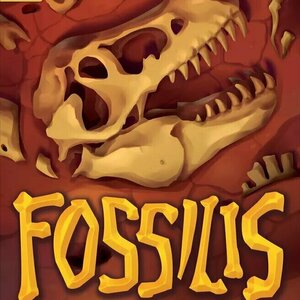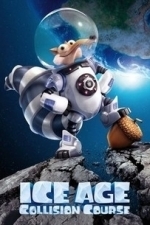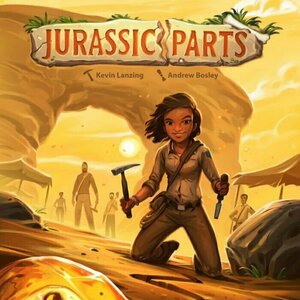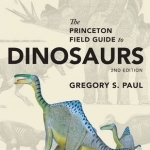
Princeton Field Guide to Dinosaurs
Book
The best-selling Princeton Field Guide to Dinosaurs remains the must-have book for anyone who loves...

Archaeologist Dinosaur - Ice Age - Games for Kids
Education and Games
App
“All my assistants started by playing this awesome game” Indiana J. “This tapping game is...
Gareth von Kallenbach (980 KP) rated Ice Age: Collision Course (2016) in Movies
Aug 6, 2019
the mammoth (Ray Romano) and his two best friends, Diego the Sabre-tooth
Tiger (Denis Leary) and Sid the Sloth (John Leguizamo). Over the course of
the first 4 films, the unlikely trio become the best of friends,
introduction of love interests for both Manny and Diego, and the birth of a
Manny’s little girl. In this chapter, Manny and Ellie’s daughter Peaches
(Keke Palmer) is engaged to Julian. Manny’s struggle to let go of his
little girl causes tension with his relationship with Julian (Adam Devine).
The unlikely herd is struck by a meteor shower, that was as usual caused by
Scrat the squirrel, that forces them underground back to to land of
Dinosaurs. The return of hyperactive weasel Buck (Simon Peg) is the
highlight of movie, with his unconventional tactics, outlandish anecdotes
and death defying acrobatics. Buck figures out a large asteroid is headed
towards Earth threatening to destroy the entire planet. The only way to
stop the asteroid from it’s extinction level destruction is to find a way
to divert the asteroid away from the planet using magnetic force. And, so
begins the adventure of the herd trying to find the town of Geotopia and
using its sacred gems to help create the magnetic field needed.
They are definitely trashing the laws of paleontology and geology with this
film. The far fetched plot line leaves little to be desired compared to
the story line of its predecessors. The audience is kept busy dealing with
boring family squabbles and Sid desperate to still find love. If it wasn’t
for the role of Buck, the adult audience would consider this movie to be a
complete flop. The younger generation will be scratching their heads
wondering if this scenario is even plausible. I know, my 8 year old kid
was questioning it! Nonetheless, there was enough slap stick comedy and
antics to keep kids entertained and parents chuckling.
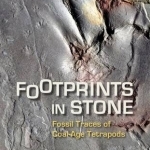
Footprints in Stone: Fossil Traces of Coal-Age Tetrapods
Ronald J. Buta and David C. Kopaska-Merkel
Book
The Steven C. Minkin (Union Chapel) Paleozoic Footprint Site ranks among the most important fossil...
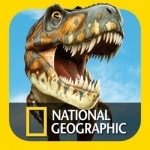
Ultimate Dinopedia: Complete Dinosaur Reference
Book and Education
App
• New York Times Top 10 Best Children's Books on the iPad • 2011 MOBI Award Winner • Time.com...
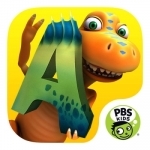
Dinosaur Train A to Z
Education and Entertainment
App
*Cynopsis Kids !magination Award Winner - Best Educational App!* *Parents' Choice Silver Award...
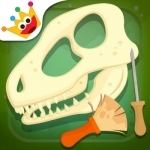
Archaeologist: Jurassic Life
Education and Games
App
“All my assistants started by playing this awesome game” Indiana J. “This tapping game is...
Purple Phoenix Games (2266 KP) rated Fossilis in Tabletop Games
Feb 17, 2021
Fossilis is a game of set collection and tile placement in which players are working to excavate and collect sets of dinosaur bones for display in museums across the world. To setup for a game, prepare the dig site as described in the rulebook. Populate the Score Track board with 9 random Skill tokens, 3 face-down randomly selected Event cards, and a Plaster pool based on the player count. Create a Market of Tool and Supply cards, as well as a Dinosaur Display. Each player receives a mat, Paleontologist meeple, and score marker in their chosen color. Pick a starting player, and in reverse turn order, players place their Paleontologists onto a corner tile of the dig site. The game is now ready to begin!
Every players’ turn has 3 steps: Actions, Market, and Lab. At the start of your turn, you have 4 Energy to spend on Actions. The available action choices are: Gain 1 Plaster (from the Plaster pool), Move up to 2 spaces (orthogonally or diagonally), Climb onto the Dig Site (if your Paleontologist was knocked off the board), Place 1 Sand tile (anywhere on the Dig Site), Dig 1 tile (slide a terrain tile 1 space in any direction), or Extract (excavate a bone/hammer). With the exception of Digging, all other Actions cost 1 Energy to perform. Digging 1 tile costs energy dependent on the type of terrain tile being moved. To dig Sand is 1 Energy, Clay is 2, and Stone is 3. To Dig, you select 1 tile that is orthogonally adjacent to your Paleontologist, and slide it 1 space in any direction you wish. Tiles that are pushed off the edge are claimed by that player, and can be used to purchase cards from the Market. It is possible for a Paleontologist to be pushed off the Dig Site, so watch out! To perform the Extract action, you will excavate a bone or hammer from an open pit orthogonally adjacent to your Paleontologist. Extraction costs Plaster dependent on the type of bone being collected. For example, extracting a tooth costs 2 Plaster, while a skull costs 6. Extracting hammers has no cost, and you immediately trade the hammer for one of the available Skill tokens in play. The Skill tokens provide benefits for the remainder of the game. Once a player has spent their Energy, they move to the next phase.
On your turn, you may buy 1 card from the Market: either a Tool or Supply card. These are purchased using the icons on any tiles you collected during the Action phase. Supply cards gain you immediate resources, while Tool cards are saved for use during a future Action step. After the Market phase is the Lab phase. You may claim a Dinosaur from the Display if you have at least one of the required bones for that Dinosaur. You can only ever have 1 Dinosaur in your Lab at a time, so strategize carefully. At any point during a turn, you can score the Dinosaur in your lab – either for full points if all required bones are present on the card, or partial points if you only have some of the required bones.
Events are triggered 3 times throughout the game when the Plaster pool has been depleted. The active player draws the top Event card, and follows the instructions on the card. Once an Event has been performed, the Plaster pool is refilled and play continues with the next player. After the 3rd event has been triggered, the Plaster pool is refilled one last time. When the last Plaster pool is depleted for this final time, the game ends. Players count up all their points, and the player with the highest score wins!
At first it may seem overwhelming, like there is a lot going on, but after a couple of turns the gameplay feels intuitive and streamlined. There are quite a few aspects to keep track of, but the overall flow of the game makes it feel clear and concise. During my plays, I have never once felt lost or confused as to what the next turn step is. The tight gameplay also lends itself to providing a variety of strategic options for players. Do you want to go for all the highest-scoring Dinosaurs, even though their bones take longer to collect? Or maybe you want to snag as many lower-scoring Dinosaurs as possible, since they should be faster to collect. You can earn end-game points based on Characteristic sets of Dinosaurs (carnivorous, herbivore, etc), so maybe you decide to focus on those sets. Or if you’re in a particularly confrontational mood, maybe you want to knock opposing Paleontologists off the Dig Site, causing them to ‘waste’ an Energy on a future turn just to climb back on into the play area. There really is no right answer as to what strategy is a sure-win, and I like that I can choose and adapt my strategies based on the current standings in the game.
Probably my favorite innovative mechanic in Fossilis is the 3D terrain and ‘digging’ actions. When setting up the game, bones and hammers are randomly scattered and distributed around the Dig Site before terrain tiles are added. So there is absolutely no way to know where you should dig for what you want! Just like a real paleontologist, you’ve got to give it your best guess. I have had some frustrating turns, spending lots of Energy to dig a tile just to find the space to be empty! Or maybe you dig and hit the motherlode, which just means you’ll probably have to fight off other paleontologists for the bones that you need. The 3D board adds another element of strategy that heightens the gameplay and makes it more immersive.
Let’s touch on components for a moment. They are AWESOME. Admittedly, I have the Kickstarter version, but I just love how well-produced this game is. The terrain tiles are nice and thick bakelite-esque tiles, and they are just dang fun to manipulate. The plaster and bones are small, but pretty detailed and sturdy for their size. The artwork on the cards is colorful and clear, the Paleontologist meeples are cute little wooden bits, and the cardboard bits are all good quality. Excellent production quality all around.
It should come as no surprise, based on my score, that I love this game. The gameplay is immersive and engaging, the mechanics add a neat twist to your normal set collection/tile placement game, and the ability to adapt strategy on the fly means that nobody is truly out of the game because of one bad turn. Purple Phoenix Games gives Fossilis a roaring 11 / 12. If you’re looking for a good dinosaur game, look no further. Yeah, they’re technically just bones here, but it still counts!
Purple Phoenix Games (2266 KP) rated Jurassic Parts in Tabletop Games
May 31, 2021
Jurassic Parts is an interesting mix and spins of area control, enclosure, and set collection for two to five players. In it, players are all paleontologists bent on claiming the biggest and best bones from a giant slab of rock containing dozens of dino species. The catch? Each paleontologist is trying to claim the bones for themselves. Sharp wit, good luck, and a bevvy of sharpened chisels spells success and fame for the paleontologist who wins at collecting Jurassic Parts.
DISCLAIMER: We were provided a copy of this game for the purposes of this review. This is a retail copy of the game, so what you see in these photos is exactly what would be received in your box. I do not intend to cover every single rule included in the rulebook, but will describe the overall game flow and major rule set so that our readers may get a sense of how the game plays. For more in depth rules, you may purchase a copy online or from your FLGS. -T
To setup, set aside one of the Pile of Bones (a wild card, of which there are several in the game) and shuffle the rest of the tiles. Split them into two stacks, flip one stack face-down, and build a slab around the Pile of Bones set aside earlier. This creates the slab of rock the players will be splitting. Each player receives their choice of paleontologist character sheet, chisels in their chosen color, and any pre-start resources per the rulebook. The slab is now ready for splitting!
On a turn, the active player will have several options. Firstly, however, the player must sharpen three chisels by moving them from the Dull Chisels are on the right of their sheet to the Sharp Chisels area on the left. Now the player may place their chisels anywhere on the slab, as long as it is on the gap between two tiles. The purpose of this is to create a wonky line of chisels that will break off sections of the slab from the larger chunk. Players will need to beware of rock piles on either side of their preferred placement, as each rock icon on either side of the placement will require an extra chisel to be dulled and discarded. If a chisel placement would cause a line to be completed, a hunk of the slab is separated from the master slab. Players consult with the line of chisels (as shown below) to determine which player has contributed more to the split than the others. This will rank out all contributing players. The player with the most chisels contributed will be able to claim their choice of HALF of the tiles split off, rounded UP (so a player would receive five tiles from a nine-tile split). The next player in contribution order will then have their choice of HALF of the remaining tiles, rounded UP (so the second player would receive two tiles from the previous example, as there would be four left). Subsequent players would then receive HALF of what is left until all tiles have been claimed, or there remains just one tile. This final tile is then given to the Field Leader for his collection.
In addition to this splitting and claiming on a turn, the active player may also make transactions with the Field Leader at any point during their turn. Actions that can be taken while transacting with the Field Leader are selling one tile to him in exchange for an Amber piece, spending Amber to: ignore rocks on the subsequent two chisel placements, sharpen two additional chisels this turn, take any of the leftover fossil tiles from the Field Leader, or take any fossil tile from the slab (as long as it doesn’t create a split). The first action from the Field Leader will cost the player one Amber. Should they wish to enact another action, its cost is two Amber. Subsequent actions on the same turn cost three Amber each.
As you will notice, fossil tiles from the slab will show plant fossils, Pile of Bones (wild), or actual bones belonging to specific dinosaurs. These specific bones will show an alphabetic letter pair icon to denote to which dinosaur it belongs. If, at the end of the game, players are able to assemble the correct type of fossil tiles belonging to specific dinosaurs, they will score many more points than if the dino skeleton were incomplete. For example, at the end of the game, each fossil tile is worth 1VP if from an incomplete skeleton. However, should a player have completed a Velociraptor skeleton, they will receive 4VP for those two tiles. A completed Triceratops scores 7VP, a T-Rex scores 10VP, a Brachiosaurus scores 15VP, and a tiny Pterodactyl scores 1VP for a complete skeleton because it spans only one tile. The Pile of Bones tiles in the game can be used in place of any other fossil tile to complete a skeleton, and Plant tiles score increasingly more points for a larger collection of them.
Play continues in this fashion of sharpening and placing chisels, breaking off sections of the slab and claiming fossil tiles, and utilizing actions at the Field Leader until all slab tiles have been assigned. The player with the most points from complete and incomplete skeletons and plants will be crowned the winner and the greatest paleontologist in the land… until the next playthrough.
Components. You know how you come to expect certain things from publishers, and can just imagine the quality of the game you are about to receive before seeing it? Such is the case with 25th Century Games. I KNOW that I will be receiving a quality product every time, and this certainly is no exception. The fossil tiles are great and sturdy. The chisels are neatly-designed and multifaceted (which I appreciate, as it would be easy to include tubular chisels and have them rolling around the table everywhere). The amber bits are the typical gemstones you find in Century: Golem Edition, but are the absolute PERFECT color and usage for this game. And did you see that first player marker? It’s a mosquito inside a polished amber stone. I mean, COME ON! How perfect is that? I’m excited just TALKING about the components. I haven’t even touched on art yet, and this is longer than most of my components paragraphs. The art is fabulous. It fits the game and the theme so perfectly – I could not have chosen a better fit myself. Has 25th Century Games set the bar too high for themselves, or will they continue to offer high quality games from here on out? I cannot wait to find out!
So sure, it looks great, but what about the gameplay? Do the art and components merely shield a mediocre game? No. Not at all. Being able to place chisels anywhere you like on the board offers players a freedom that is refreshing, but weighing that against the pressure to contribute to an existing or emerging line of chisels so that you are included in the split is just wonderful. Contemplating turns to sell off fossil tiles in order to earn enough amber to gain more chisels, or bypass rocks, or simply take the perfect tile for your collection offers just enough tacticization (why isn’t that a word…) to warm up the brain without indulging the AP in some players.
This is not at all a heavy game, and it certainly doesn’t need to be. It is just a fun time with friends and family that utilizes interesting twists of mechanics that I enjoy. It feels reminiscent of several games (hints of Through the Desert and a twist on I Split You Choose), but it entirely its own design. Purple Phoenix Games gives this one very rewarding 10 / 12. I generally enjoy most dinosaur-themed games, I understand, but this one sits among the best I have played. If you are looking for something that feels both familiar and fresh, with incredible art and components, you need to grab a copy of Jurassic Parts. There are just so many interesting choices to be made and strategies to attempt. I think I will setup a game right now. Want to come play?
